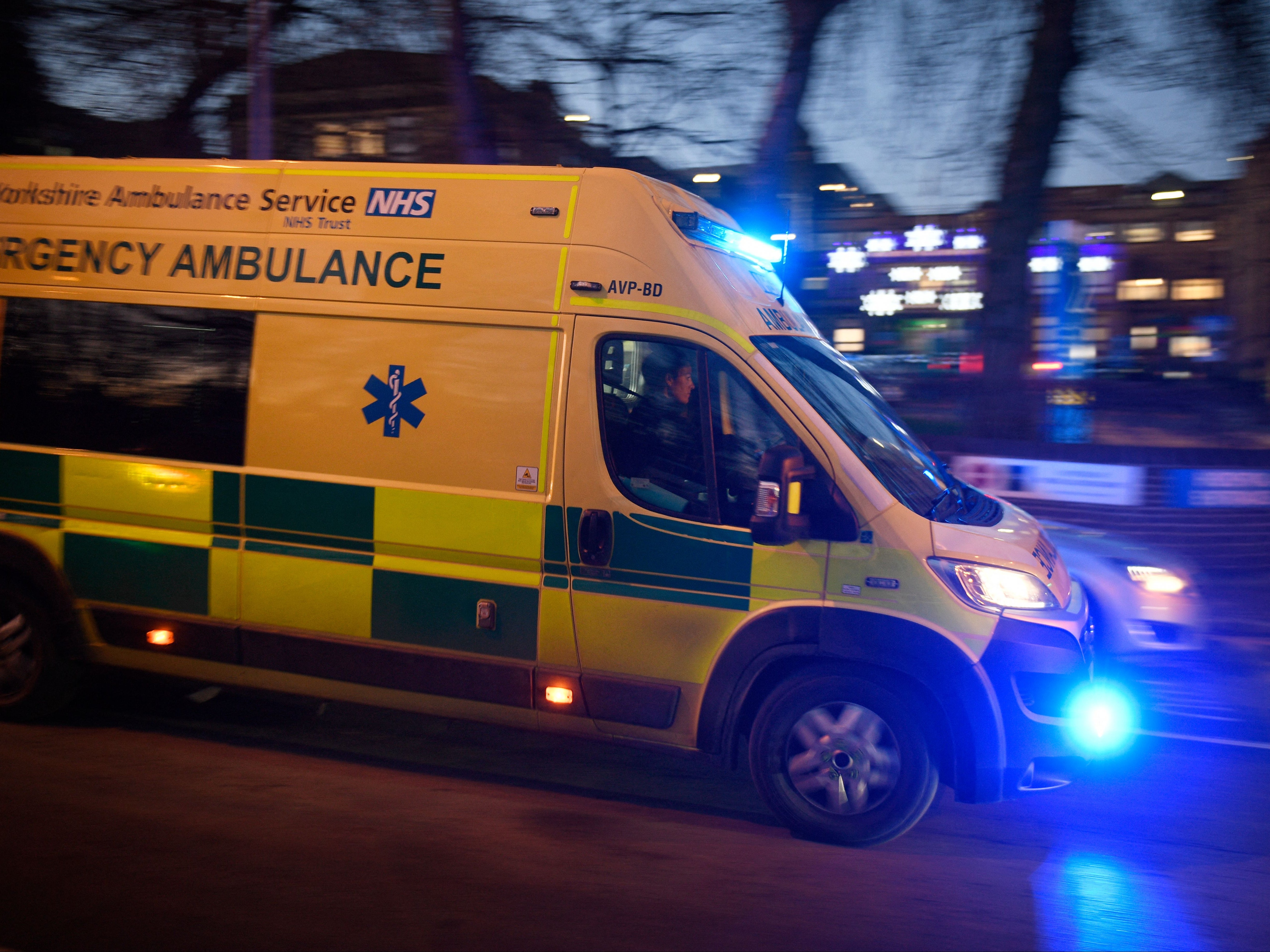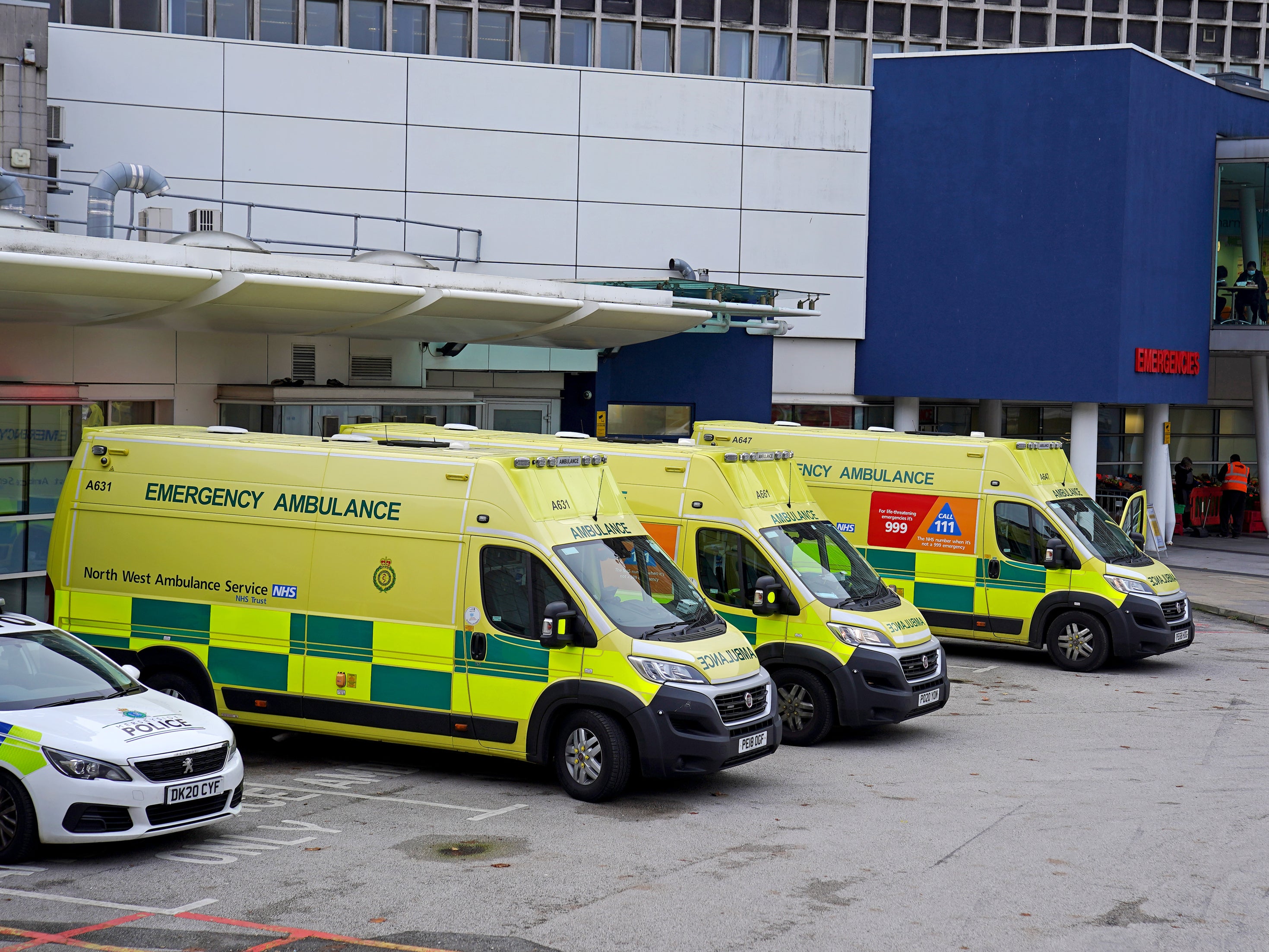Violence against ambulance staff in England at record high as A&E crisis intensifies
Exclusive: More than 12,000 paramedics were verbally or physically assaulted, or threatened, in the 12 months to April 2022

Your support helps us to tell the story
From reproductive rights to climate change to Big Tech, The Independent is on the ground when the story is developing. Whether it's investigating the financials of Elon Musk's pro-Trump PAC or producing our latest documentary, 'The A Word', which shines a light on the American women fighting for reproductive rights, we know how important it is to parse out the facts from the messaging.
At such a critical moment in US history, we need reporters on the ground. Your donation allows us to keep sending journalists to speak to both sides of the story.
The Independent is trusted by Americans across the entire political spectrum. And unlike many other quality news outlets, we choose not to lock Americans out of our reporting and analysis with paywalls. We believe quality journalism should be available to everyone, paid for by those who can afford it.
Your support makes all the difference.Violence against ambulance staff in England has reached a record high, as the NHS crisis in emergency care continues to deepen.
An estimated 12,626 incidents were reported in the 12 months to April 2022, according to nationwide data shared with The Independent – a 7 per cent rise on the previous year.
However, since 2016, the number of paramedics who have been verbally or physically assaulted, or threatened with assault, has nearly doubled, rising from 7,689.
Adam Hopper, the national ambulance violence prevention and reduction lead for the Association of Ambulance Chief Executives (AACE), which provided the data, said the findings “confirm the worrying trend of increasing violence against ambulance staff”.
One paramedic told The Independent a bone was broken in his neck after he was strangled by a drunken patient he was attempting to treat.
Matthew Taylor, chief executive of the NHS Confederation, a membership body for trusts in England, said that alcohol is the most prominent factor in such assaults, followed by drugs and people being in mental health crisis. “Race and sexuality have also increased as exacerbating factors in these assaults, as have delays to treatment and arrival times,” he added.
London Ambulance Service (LAS) data shows that, up until 15 June, an average of four of its paramedics were verbally or physically assaulted every day. The service, the busiest in the country, has begun rolling out the use of body cameras to deter violent patients.
Brian Jordan, director of 999 emergency operations centres for LAS, said: “Every day, our staff and volunteers give their all to the people of London, working around the clock to provide care and save lives.
“But, although they come to work to help people in their hour of need, the sad reality is that they face some very difficult and sometimes frightening circumstances.
“There are a minority of patients and members of the public who behave hatefully or violently towards our staff and volunteers, and that situation has to change.”
The AACE data provides a national breakdown of the types of assaults reported. Alcohol-related incidents have increased by 37 per cent since 2016, rising from 1,624 to 2,238.
Racist attacks have increased by 88 per cent over the same period (from 144 per year to 272), while incidents involving weapons have more than doubled – up from 115 to 327 over the past six years.
In total, 9,940 incidents have so far been reported for 2021/2022 by eight of England’s 10 ambulance trusts.
Based on analysis of the overall rising trend of assaults, the remaining two trusts are expected to report a further 2,686 cases of physical or violent incidents between them, bringing the nationwide total to 12,626 – a new national record, Mr Hopper said, adding that the figure could be as high as 13,000.
Joel Blacker, a 29-year-old paramedic with LAS, said he was forced to take two months off work after a drunken patient strangled him and broke a bone in his neck while he was on duty in Camden.
He said he went on to miss an important assessment for a fast-stream course and is now years behind in his career.
“I’ve also found myself in many situations where it could have escalated, but people looked at my camera and then their demeanour changed,” he said.

Before the strangling incident, he added, he was almost stabbed when a mental health patient drew a knife on him. He said his colleagues are typically attacked between one and three times a year.
Asked if he could explain the long-term rise in violence against paramedics, he said there was often “a lot of frustration among patients”, many of whom are angry at delays. “But usually alcohol and drugs are involved, and don’t help the situation at all,” Mr Blacker added.
In recent months, patients with serious and life-threatening injuries have reported waiting hours for an ambulance.
Analysis from the Nuffield Trust shows that it took an average of 61 minutes to respond to a category 2 emergency call, for patients in a serious condition, in March 2022 – the worst monthly figure recorded over the past two years.
The time taken to respond to a life-threatening category 1 call has also increased, with the average wait since May 2021 exceeding the NHS’s seven-minute target, peaking in March 2022 at nine minutes 35 seconds.
The delays come at a time of crisis in A&E. Last week, figures from the Royal College of Emergency Medicine showed that, in 2021, an average of 1,047 people a day were waiting more than 12 hours in A&E.
Speaking at the recent NHS Confederation Expo in Liverpool, Amanda Pritchard, chief executive of the NHS, told health leaders that April 2022 had been “the busiest ever for ambulance services in terms of calls and category 1 incidents, and the second busiest for accident and emergency departments”.
But irrespective of the rising pressures, it remains unacceptable to abuse and harass staff, ambulance chiefs say.
“No staff member should face violence when turning up to help patients or families in an emergency situation,” said Mr Hopper. “We all deserve to work without fear."
NHS Providers, which represents trusts in England, said its members were “concerned by current increases in incidents of violence against staff, and this data shows that this happens far too often. Violence and abuse can have a devastating impact on staff morale as well as physical and mental wellbeing.”
It said ambulance trusts were providing specialist de-escalation training, “down time” for staff after incidents, and “even body cameras. But this shouldn’t have to be the case.”




Join our commenting forum
Join thought-provoking conversations, follow other Independent readers and see their replies
Comments